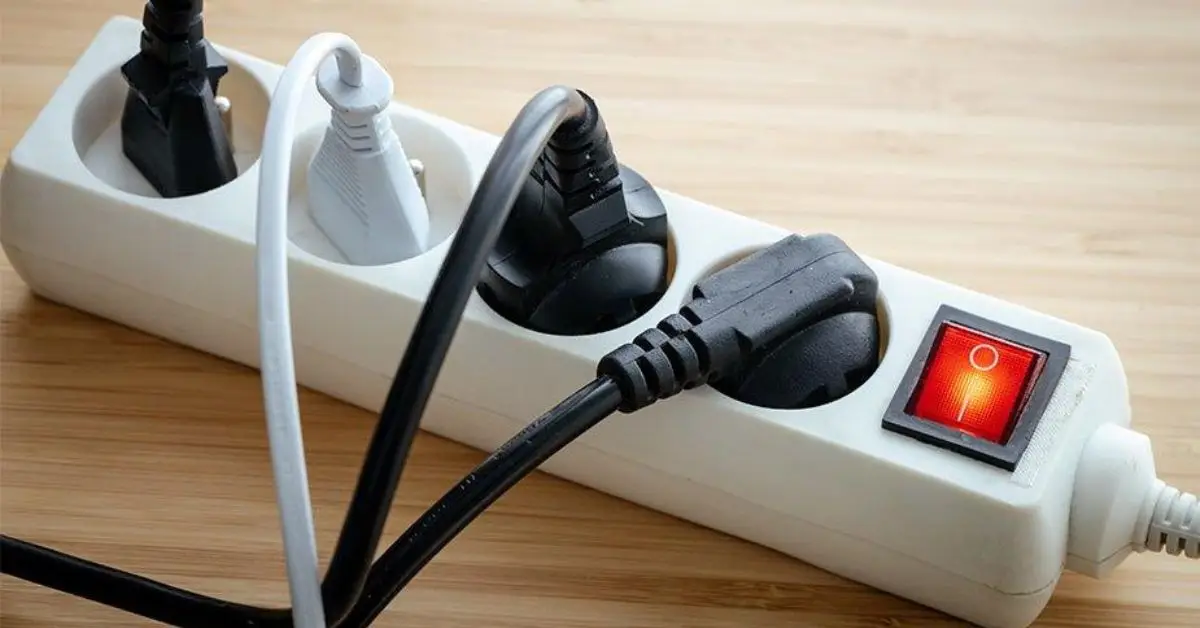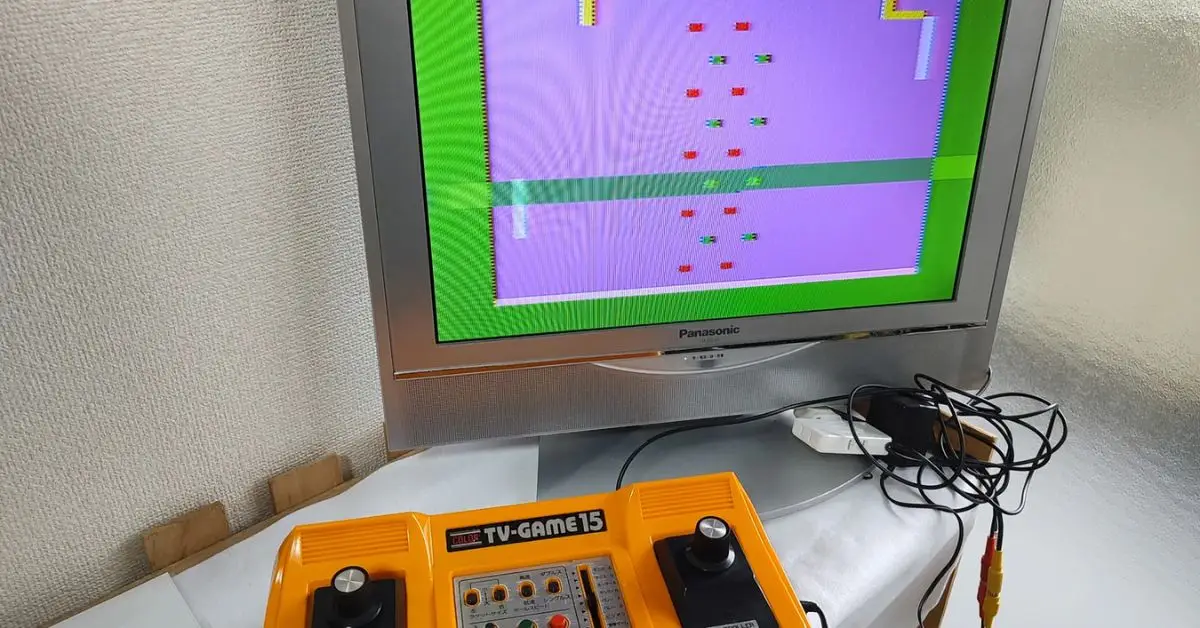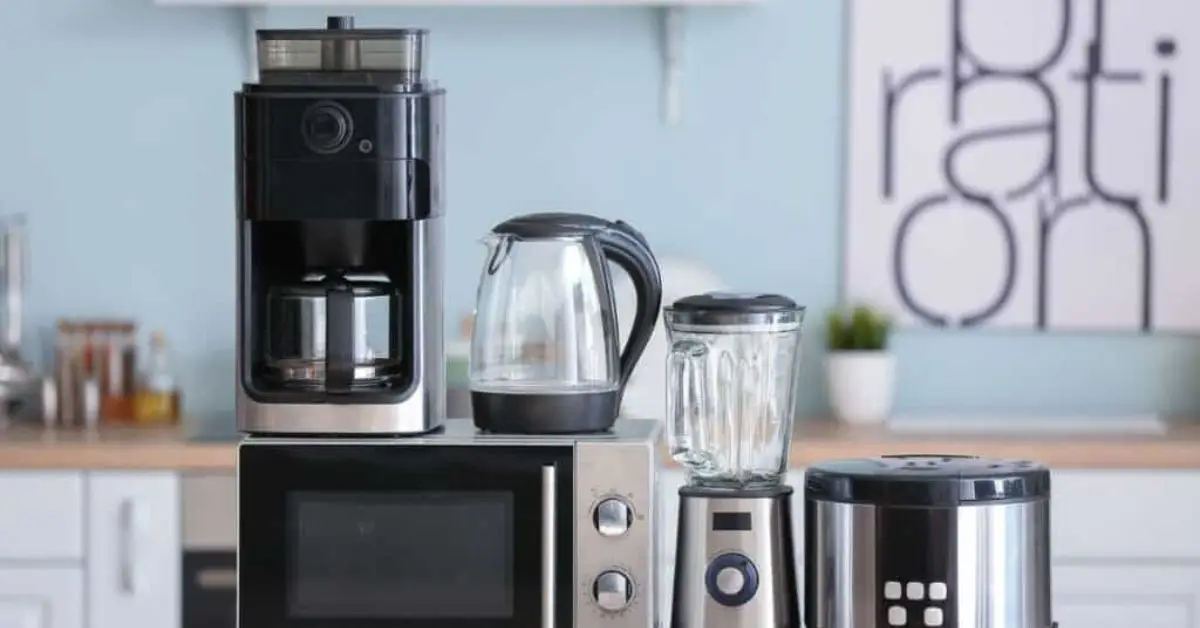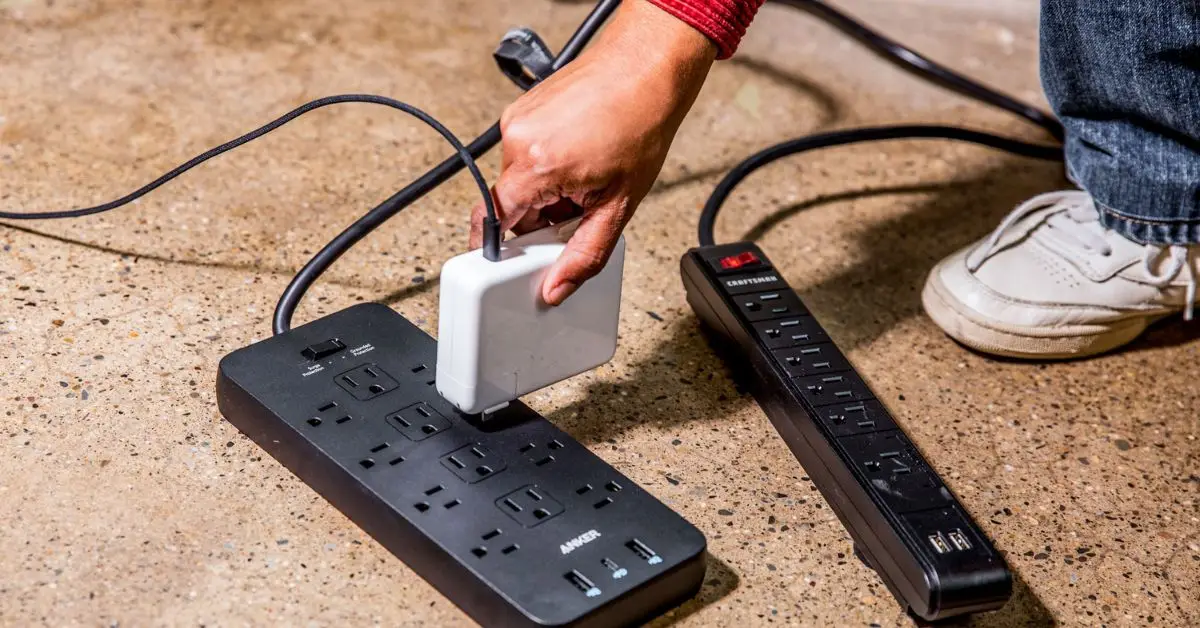Stop Wasting Power: Unplug These 5 Appliances Today to Cut Your Electric Bill
You’re probably doing the “right” things to save on your electric bill—switching off lights, using LED bulbs, maybe even adjusting your thermostat before leaving home. But here’s a question most people never ask:
How many things are still plugged in around your house right now… that aren’t even in use?
The truth is, a surprising chunk of your energy bill might be coming from devices that aren’t technically “on.” They’re just sitting there, quietly pulling power all day, every day. You don’t hear them. You don’t see them. But you’re absolutely paying for them.
In this article, I’ll show you five everyday appliances you should unplug right now—not next week, not later—if you want to start saving serious money. These aren’t extreme changes. No smart-home overhaul or rooftop solar required. Just small, smart habits that can stop invisible energy leaks.
Let’s start with the biggest energy scam in your house: phantom power.
What Is Phantom (Vampire) Power & Why It Matters
Ever notice how your TV’s standby light is still glowing long after you’ve turned it off? Or how your microwave’s digital clock never sleeps? That’s phantom power—also called vampire energy—and it’s quietly eating away at your electricity budget.

Most plugged-in devices draw some level of power even when you’re not using them. The worst part? You won’t see it on the screen or hear a sound, but it’s happening 24/7. And over the course of a year, this “always-on” drain can add up to a real number on your energy bill.
Standby power accounts for 5% to 10% of residential electricity use. That could easily mean $100 to $440 a year slipping through the cracks—just because certain devices never truly power down.
Now think about everything you have plugged in right now: TVs, chargers, coffee makers, Wi-Fi routers, printers… maybe even a dozen things you haven’t touched in weeks. All of them could be drawing power just for the convenience of being “ready.”
Here’s the good news: phantom load is one of the easiest sources of energy waste to fix. You don’t need fancy tech or a home energy audit. You just need to know which devices are the worst offenders—and unplug them when they’re not needed.
That’s exactly what we’re diving into next. I’ll walk you through the five biggest energy vampires in most American homes—and how to stop them cold.
Quick question before we move on—if you walked around your home right now, how many things would you find plugged in that haven’t been used today? You might be shocked by the count.
Top 5 Vampire Appliances to Unplug Right Now
So now you know what phantom power is—and why it matters. Let’s get into the real stuff: which devices are draining your wallet while pretending to be “off.”
These five are the worst offenders I see in most American homes. The good news? You can unplug them without messing up your routine.
1. TVs, Cable Boxes & Game Consoles
Let’s start with the living room—because it’s one of the biggest culprits.
Your smart TV might be “off,” but that little red standby light? It means it’s still pulling power. Same goes for cable boxes and gaming consoles like PlayStation or Xbox. In fact, the National Resources Defense Council (NRDC) found that some gaming systems can consume up to 15 watts in standby mode—24/7.

That adds up fast.
Even worse, DVRs and set-top boxes often don’t go fully off unless you unplug them. Some models can use more energy per year than a refrigerator, just by staying “ready.”
And let’s be honest—how often are you really using the cable box? If it’s not daily, unplugging it between uses can seriously cut waste.
Tip: Plug all your entertainment devices into a single power strip. When you’re done watching or playing, just flip the switch. One second of effort, real savings over time.
Ask yourself: Is it really worth paying to keep your Xbox “ready” overnight?
2. Phone, Laptop & Device Chargers
Chargers are sneaky. Most of us leave them plugged in 24/7—on the nightstand, in the kitchen, by the couch. But here’s the thing: even when they’re not charging anything, they’re still pulling power.
That little brick on your phone charger? It’s basically a tiny transformer. And if it feels warm to the touch when nothing’s connected, that’s wasted energy you’re paying for. Multiply that by 3 or 4 chargers across the house, and it’s not small change anymore.
Many adapters continue to draw between 0.1 to 0.5 watts on standby—and more if your device is fully charged and still plugged in. It might not sound like a lot, but over months (and across multiple devices), it adds up.
Pro Tip: Unplug chargers when you’re not using them—or use a smart power strip that shuts them off automatically. Better yet, charge during the day and unplug before bed. Your phone doesn’t need eight hours to reach 100%.
And if you’re thinking, “It’s just a few cents,” remember: energy waste isn’t just about money—it’s about building habits that scale across your entire home.
Quick check—how many chargers are currently plugged in around your house? Bet you’ll find more than you expected.
3. Microwaves, Coffee Makers & Other Kitchen Gadgets
Let’s talk about your kitchen—the land of blinking clocks and forgotten plug-ins.
That microwave clock that’s always on? It might seem harmless, but it’s pulling 1 to 3 watts constantly, even when you’re not using it. Same goes for your coffee maker, toaster oven, air fryer, or any appliance with a digital display, timer, or standby setting.

These small gadgets might not look powerful, but the standby power doesn’t go away—it quietly runs all day, every day. And when you multiply that by 3–5 devices in a typical kitchen, you’re looking at $20 to $40 a year in wasted electricity… just from clocks and idle lights.
According to a helpful piece on which kitchen appliances you should always unplug, even something as basic as a digital coffee maker can use up to 30 kWh per year just for the clock—not for making coffee.
Fix it fast: If you don’t use it daily, unplug it. Or group small appliances on a countertop power strip and shut them all off at once. One flick = instant savings.
Also: don’t forget those “smart” appliances with Wi-Fi or app connectivity. They stay connected to your home network 24/7, drawing extra juice even when they’re doing nothing.
So—are all those glowing lights in your kitchen actually helping you? Or just raising your bill?
4. Computers, Printers & Home Office Gear
If you work from home—or even just have a home office corner—you’ve got at least a few power-hungry devices plugged in 24/7. Think: desktop computers, monitors, printers, routers, speakers… maybe even an old fax machine still eating watts in the background.
Here’s the problem: most of these devices don’t shut off fully. Even when they’re “asleep,” they stay in standby mode so they can wake up faster. That convenience costs you.
A typical desktop computer in sleep mode can still use 1 to 5 watts, and printers with standby functions can draw even more. And if you leave everything powered up overnight or during the weekend? That’s a slow, constant drain you probably never notice.
According to Avista Utilities, office equipment like printers and computers can quietly drive up your electricity bill when left plugged in all the time—especially if you’re not using energy-saving modes or turning them off after hours.
Try this: Plug your office gear into a dedicated power strip. At the end of your workday, just flip it off. That one habit can save you $50 or more per year, depending on how much gear you’ve got running.
Also worth noting: many older printers or external hard drives continue spinning or blinking even when idle. If you haven’t used it in a week, do yourself a favor—pull the plug.
Quick thought: when was the last time you fully powered down your home office setup—like, actually shut it off? If you can’t remember, there’s probably a good chunk of energy being wasted.
5. Power Strips, Extension Cords & Garage Tools
This one surprises a lot of people. Power strips, especially the cheap ones, draw power even when nothing’s plugged into them. And if they’re fully loaded with idle devices—chargers, workshop tools, string lights, garage gadgets—the phantom load multiplies fast.

The garage and basement are often full of “out of sight, out of mind” energy vampires. Think about it: a battery charger for tools, an old radio, a mini-fridge you barely use, or that string of holiday lights still hanging from last winter. If they’re plugged in, they’re likely using power—even when you think they’re “off.”
According to experts quoted in Better Homes & Gardens, things like garage electronics, power tool chargers, and even small appliances like mini air compressors can quietly draw power all year long—adding unnecessary costs to your bill.
Quick fix: If you’ve got a power strip with multiple idle devices, switch to a smart power strip that cuts off current automatically when not in use. Or just make it a habit to flip the switch when you leave the garage or workshop.
And don’t ignore extension cords. Some models have indicator lights that stay on 24/7. It’s not a huge draw, but over months, it adds up—and you’re not getting anything for that energy.
Here’s something to try tonight: Go check your garage or basement. How many tools or lights are plugged in and haven’t been touched in days? That’s energy going straight to your utility company.
Easy Ways to Unplug Without Changing Your Whole Life
Unplugging stuff sounds simple in theory—but in real life? Not everything’s easy to reach. Some things are used daily. And let’s be honest, no one wants to crawl behind a TV every night just to save a few cents.
That’s why this isn’t about unplugging everything—it’s about making smarter, lower-effort decisions that actually stick.
Use Smart Power Strips Where It Counts
Smart strips cut power automatically when your devices go idle. Some even have timers or motion sensors, so you’re not wasting energy while you’re asleep or at work.
They’re perfect for:
- TV + entertainment setups
- Home office gear
- Kitchen counters loaded with small appliances
And no, they’re not expensive. You can get a good one for under $25. Smart strips can reduce standby loss from connected devices by up to 50%.
Pro tip: Label each outlet on your strip with masking tape so you know what’s what—makes it easier to switch off only what you don’t need.
Create a “Unplug Before Bed” Routine
No one likes routines, but this one’s dead simple. Before going to bed:
- Unplug phone/laptop chargers
- Flip off your desk strip
- Shut off kitchen gadgets (coffee maker, toaster, etc.)
- Kill the TV setup with one switch
You don’t have to do it all—just a few steps nightly can cut $5–$15 a month off your bill. Combine this with simple behavioral tweaks like stop doing these 5 things at home this summer, and your utility savings can grow even faster.
Make it a habit like brushing your teeth. You won’t even notice after a week—but your electric bill will.
Charge Devices Only When Needed
Phones, tablets, headphones—you don’t need them plugged in all night. Once they’re at 100%, keeping them connected just wastes energy and can even shorten battery life.
Charging while you’re awake = unplugging on time. Win-win.
Bonus: Get a Plug-In Power Meter
Want to see what your devices are really costing you? A plug-in energy meter (like the Kill A Watt) can tell you exactly how much each gadget uses—even in standby.
It’s a great way to:
- Spot hidden energy hogs
- Get real dollar estimates
- Feel motivated to take action
You can find one for $15–$25 online or at any hardware store. Trust me, it’s weirdly satisfying to finally see where your energy is going.
What’s one device in your home you never unplug, even though you probably should? Think about it. Then go try unplugging it for just 3 days and watch what happens.
How Much Can You Actually Save (And Why It Matters)
At this point, you might be thinking: “Okay, but is all this unplugging really worth it?”
Fair question. So let’s talk numbers.
The Real Cost of Doing Nothing
The average U.S. household spends over $2,000 a year on electricity. Vampire power alone accounts for $100–$440 of that.
That’s not pennies. That’s a weekend getaway. A couple of grocery trips. Or two streaming subscriptions paid for the entire year.
And keep in mind: that’s for a typical home. If you’ve got a large household, multiple TVs, chargers in every room, and a home office setup? You’re likely on the higher end of that range.
The Environmental Payoff
This isn’t just about your wallet.
If every U.S. household reduced phantom load by just 25%, we’d cut millions of tons of carbon emissions each year. Less wasted electricity means less fossil fuel burned at power plants—and fewer greenhouse gases entering the atmosphere.
And the best part? This doesn’t require major lifestyle changes or expensive gadgets. Just better habits and smarter unplugging.
Even small changes matter when millions of people do them. And if you’re ready to take the next step, consider smart energy upgrades that boost your home’s resale value—they can improve efficiency and increase long-term property value.
Your Impact in a Year (Estimate)
| Action | Annual Savings | Emission Reduction |
|---|---|---|
| Unplugging 5 key appliances | $100–$150 | ~500 lbs of CO₂ |
| Using smart strips for office + TV | $50–$80 | ~250 lbs of CO₂ |
| Avoiding overnight charging | $20–$40 | ~100 lbs of CO₂ |
This isn’t just a feel-good fix. It’s a smart, measurable change that lowers your bill and your footprint.
What would you do with an extra $200 a year back in your pocket—no effort, just smarter habits? Worth thinking about.
Your 7-Day “Unplug & Save” Challenge
You don’t need to overhaul your whole house. Just start small—and stay consistent.
Here’s a 7-day mini challenge you can try this week:
Your Daily Checklist
- Day 1: Walk through your home and count how many devices stay plugged in all the time.
- Day 2: Unplug all unused chargers (phone, laptop, tablet).
- Day 3: Shut off kitchen gadgets you don’t use daily (microwave, coffee maker, etc.).
- Day 4: Kill your home office strip after work.
- Day 5: Unplug garage/basement tools that aren’t in use.
- Day 6: Track overnight charging habits—can you charge during the day instead?
- Day 7: Plug in a smart strip or energy meter and track your usage.
You don’t need perfection. Just progress. The habits you build this week could lower your bill for years. If you’re also thinking about giving your home a little refresh, try these easy summer home updates that transform your space—they’re budget-friendly and energy-smart.
Tell Me This…
Which appliance in your home surprised you the most when you found out it wastes electricity even when “off”?
Or—what’s one habit you’re going to start this week?
Drop a comment, share your favorite hack, or forward this to someone who leaves 6 chargers plugged in 24/7. (You know who they are.)
Want more smart home tips like this? Visit Build Like New for practical ways to cut costs, waste less, and upgrade how your home runs—without overthinking it.
Disclaimer: Savings and energy usage may vary by household, location, and device type. All data in this article is based on U.S. averages and publicly available sources at the time of writing.


